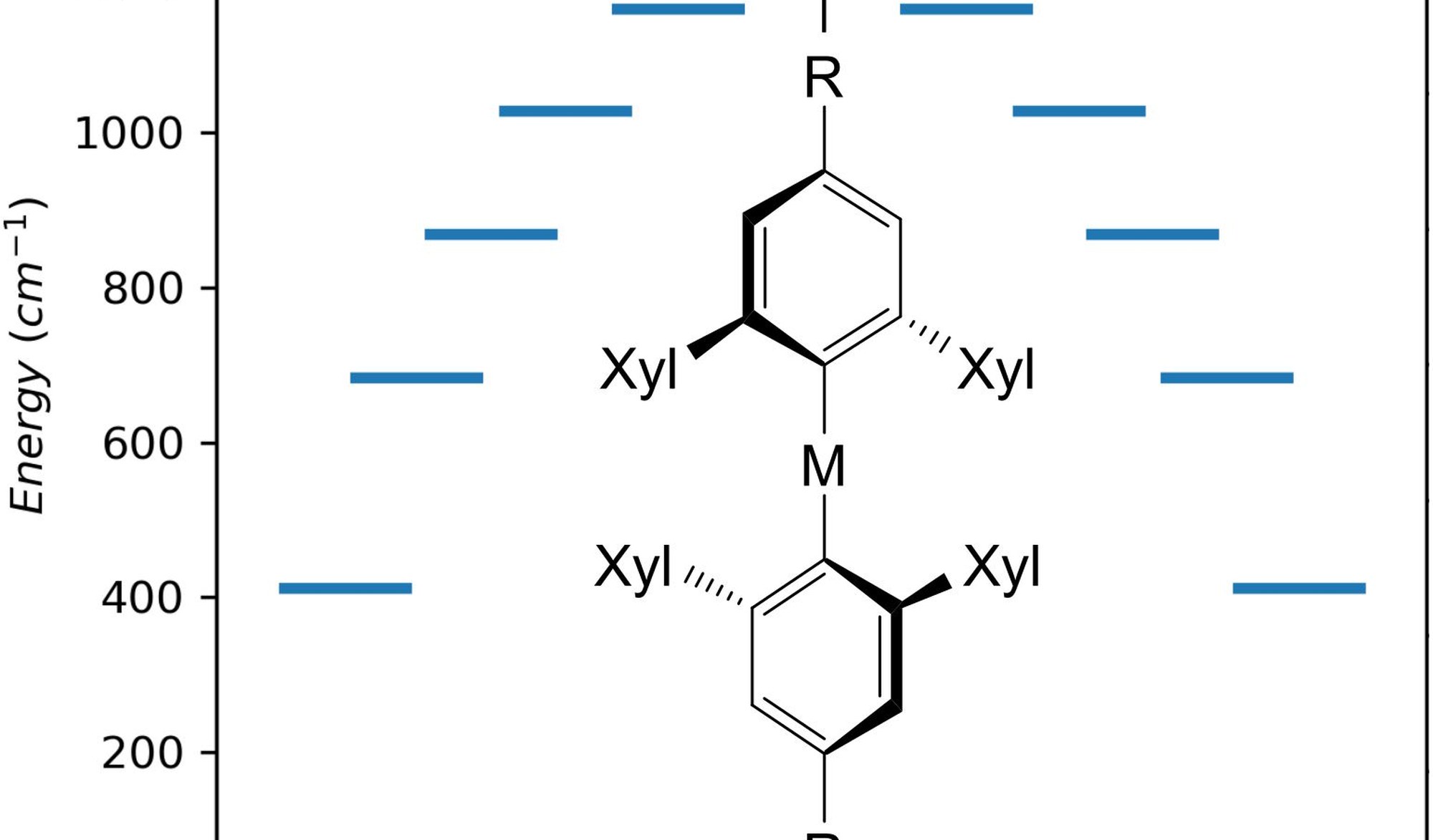Ligand design for new single molecule magnets

Single molecule magnets (SMMs) are compounds that encapsulate magnetism at a purely molecular level, with the key property of slow relaxation of magnetisation as a defining feature. As such, SMMs are currently being investigated as candidates for high-density information storage devices and molecular spin qubits, representing an alternative platform to implement quantum computation.
One of the main figures of merit used to assess the performance of SMMs is the effective barrier to magnetisation reversal (Ueff), which informs about how good the system is at retaining magnetisation. The most efficient strategy to achieve large Ueff values consists of sandwiching a single metal atom between two coordinating ligands, what is known as an axial crystal field environment. Creating such crystal fields is not straightforward and currently only a limited number of ligands are up to the task. Recently, we have shown that a new type of ligands leads to axial crystal fields in iron-based compounds - in this project, you will take these results further and use quantum chemistry methods to study how to combine these ligands with more promising lanthanide ions and obtain even larger Ueff values. In particular, you will acquire knowledge on
- Density Functional Theory (DFT) calculations to perform molecular geometry optimisations and characterisation of local minima of the proposed molecules.
- Multiconfigurational methods (MCSCF) to accurately describe the electronic structure of the compounds and calculate Ueff values.
- Quantum chemistry packages such as OpenMolcas, Gaussian and/or Orca, as well as High Performing Computing (HPC) structures, where the calculations will be run.
- Coding in Python, as an effective way to treat, organise and visualise data.
The candidate is expected to have a good knowledge of computational chemistry and electronic structure theory of molecules.
